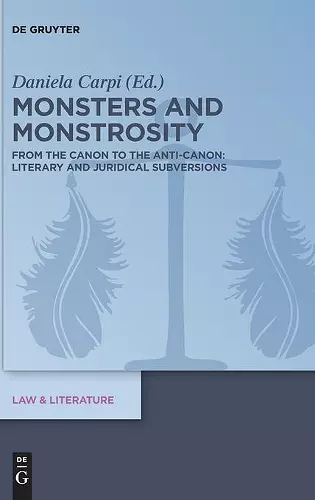Monsters and Monstrosity
From the Canon to the Anti-Canon: Literary and Juridical Subversions
Format:Hardback
Publisher:De Gruyter
Published:17th Jun '19
Currently unavailable, and unfortunately no date known when it will be back

Every culture knows the phenomenon of monsters, terrifying creatures that represent complete alterity and challenge every basic notion of self and identity within a cultural paradigm. In Latin and Greek culture, the monster was created as a marvel, appearing as something which, like transgression itself, did not belong to the assumed natural order of things. Therefore, it could only be created by a divinity responsible for its creation, composition, goals and stability, but it was triggered by some in- or non-human action performed by humans. The identification of something as monstrous denotes its place outside and beyond social norms and values. The monster-evoking transgression is most often indistinguishable from reactions to the experience of otherness, merging the limits of humanity with the limits of a given culture. The topic entails a large intersection among the cultural domains of law, literature, philosophy, anthropology, and technology. Monstrosity has indeed become a necessary condition of our existence in the 21st century: it serves as a representation of change itself. In the process of analysis there are three theoretical approaches: psychoanalytical, representational, ontological. The volume therefore aims at examining the concept of monstrosity from three main perspectives: technophobic, xenophobic, superdiversity. Today’s globalized world is shaped in the unprecedented phenomenon of international migration. The resistance to this phenomenon causes the demonization of the Other, seen as the antagonist and the monster. The monster becomes therefore the ethnic Other, the alien. To reach this new perspective on monstrosity we must start by examining the many facets of monstrosity, also diachronically: from the philological origin of the term to the Roman and classical viewpoint, from the Renaissance medical perspective to the religious background, from the new filmic exploitations in the 20th and 21st centuries to the very recent ethnological and anthropological points of view, to the latest technological perspective , dealing with artificial intelligence.
ISBN: 9783110652192
Dimensions: unknown
Weight: 573g
307 pages